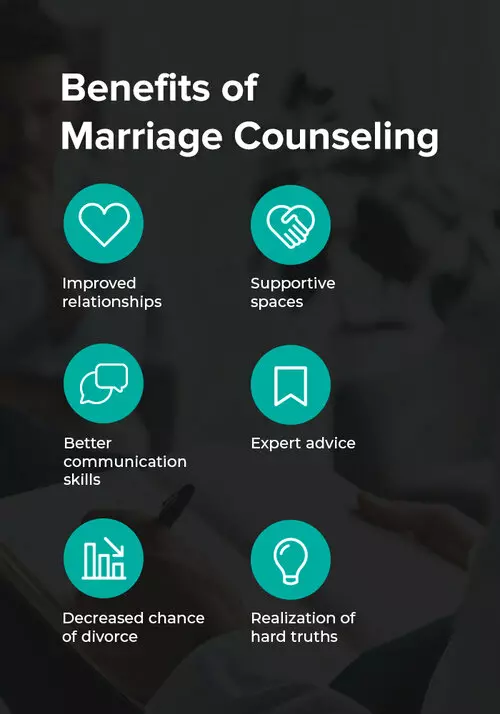Things about Aim Point Counseling
Things about Aim Point Counseling
Blog Article
A Biased View of Aim Point Counseling
Table of ContentsWhat Does Aim Point Counseling Do?Aim Point Counseling Can Be Fun For AnyoneAim Point Counseling Can Be Fun For Everyone6 Easy Facts About Aim Point Counseling ExplainedThe 2-Minute Rule for Aim Point CounselingGetting The Aim Point Counseling To Work
The longitudinal layout includes a pre-treatment survey and two follow-up surveys at 3- and 12-months post-intervention. The study is set in 8 Relationships Australia Victoria centres, throughout city, outer suburbs, and regional/rural websites. Relationships Australia, a non-government organisation, is the biggest copyright of pair therapy and connection services in Australia.
In Australia, the mean size of marital relationship prior to splitting up is 8.8 years, and around half of all divorces entail couples with kids [1] These high prices of relationship break down have actually been continually connected with negative health and wellness consequences for both adults and youngsters complying with divorce/separation. These include seclusion from support networks, and reduced income and requirement of living for both grownups and kids [3], issues of loyalty over kids for guys, and clinical depression and loss of identity for females [4,5]
The smart Trick of Aim Point Counseling That Nobody is Discussing
The effects of divorce and separation can be detrimental, research study shows that high partnership dissonance in undamaged pairs is likewise most likely to have unfavorable end results.
Study to date has determined both couple and individual factors that might contribute to partnership disharmony. These include connection contentment and commitment at the pair level, and clinical depression at the specific level.
Rumored Buzz on Aim Point Counseling
Connection complete satisfaction has been one of the most usual outcome variable determined in even more than 200 assessments of pair coaching [11,12] Research studies have found considerable renovations in partnership fulfillment from pre- to post-treatment [13,14] and throughout one to 2 years complying with counselling [15] In these studies, connection satisfaction was most often analyzed using the Dyadic Modification Scale (DAS) [16] As a result, while a lot of researches show enhancements in partnership fulfillment complying with pair coaching, they are limited by the examples and steps used, mostly temporary follow-up period, and analyses that do not make up the dyadic nature of couple information. Relationship dedication, based on steps such as the Commitment Inventory (CI) [19], is another typically investigated connection result.
To summarise, research study indicates that couple-specific variables in addition to specific aspects may predict the results of pair coaching and partnership services. The causal direction of these relationships, nonetheless, is less clear. These observations are necessary, since, to warrant and guide the application of relationship solutions such as couple therapy, empirical evidence has to explore both the results of partnership services and the factors that forecast effective treatment.
There is a growing agreement that effectiveness researches ought to be matched by efficiency study to best educate scientific method [ 29] The minimal performance research that exists to date recommends that pair therapy can boost results such as relationship fulfillment [33,43], interaction skills and basic wellness [44], at the very least in some European countries.

We currently understand little about the accounts of couples that seek out relationship education compared with those that seek connection therapy, or the outcomes of these programs. Nonetheless, unscientific proof recommends that there may be considerable distress among a minimum of some couples looking for partnership education and learning. Connection education programs vary from couple counselling as they are commonly very structured, carried out in teams, and focus on a blend of 4 elements; recognition, responses, cognitive adjustment, and skills training [45]
What Does Aim Point Counseling Do?
Comments entails participants finishing sets of questions about their connection (e.g. steps of interpersonal troubles), and getting details on what their ratings show. Cognitive-behavioural methods advertise changing cognitions to assist in positive partnerships. These may consist of advertising practical attributions/expectations around negative partner behaviour [46] In abilities training, couples attend lectures or discussions on partnership abilities, and practice these throughout facilitator-led activities [ 45]
These results have lingered for as much as 4 years in some researches [47] Nonetheless, these meta-analyses highlight limitations in the present literature on relationship education. Particularly, the bulk of researches involved pairs from upper socio-economic histories who were not experiencing high relationship disharmony [47,48] This example account might not represent clients that generally present for partnership education.
Aim Point Counseling for Beginners

Very little research study has taken a look at the comparative advantages of couple counselling and relationship education programs. As clients are likely to self-select right into these solution types, it is unclear whether characteristic relationship distress accounts existing to every solution type, or undoubtedly whether there is a communication between providing account, solution kind and outcome.
(https://blogfreely.net/a1mpoint/aim-point-counseling-setting-your-sights-on-a-brighter-horizon)
Hence, we have actually consisted of a 12-month follow-up to gauge longer-term patterns and effects. The research study uses a number of standardized end result procedures given that some previous examinations have been criticised for their about his lack of standard evaluation [50] The use of analytical analyses that think independence of data, such as t-tests, or ANOVAs, has been prevalent in previous studies [ 44,49]
Consequently, we propose to make use of multi-level statistical modelling treatments that control for the inter-dependence of couple information to evaluate any kind of therapy impacts. The particular objectives of the ECC study are to: 1. Map accounts of clients seeking community agency-based couple counselling vs. relationship enhancement programs in regards to socio-demographic and partnership indicators (such as partnership fulfillment, connection commitment, social issues, and factors for participating in), in addition to health (such as anxiety, basic wellbeing) and health and wellness service use (eg.
2. Determine whether pair counselling and connection education and learning solutions improve 3- and twelve-month outcomes for relationship satisfaction, commitment, and depression, utilizing analytical evaluations ideal to combine data. 3. Determine the loved one payments of customer variables (individual and pair) and therapy/education elements to end results at 3- and 12-months, and to sustainability of results gradually.
The smart Trick of Aim Point Counseling That Nobody is Talking About
Multi-level modelling to determine pre-post differences, controlling for dyadic (pair) level. To add to the literary works evaluating the performance of community-based pair counselling.
Report this page